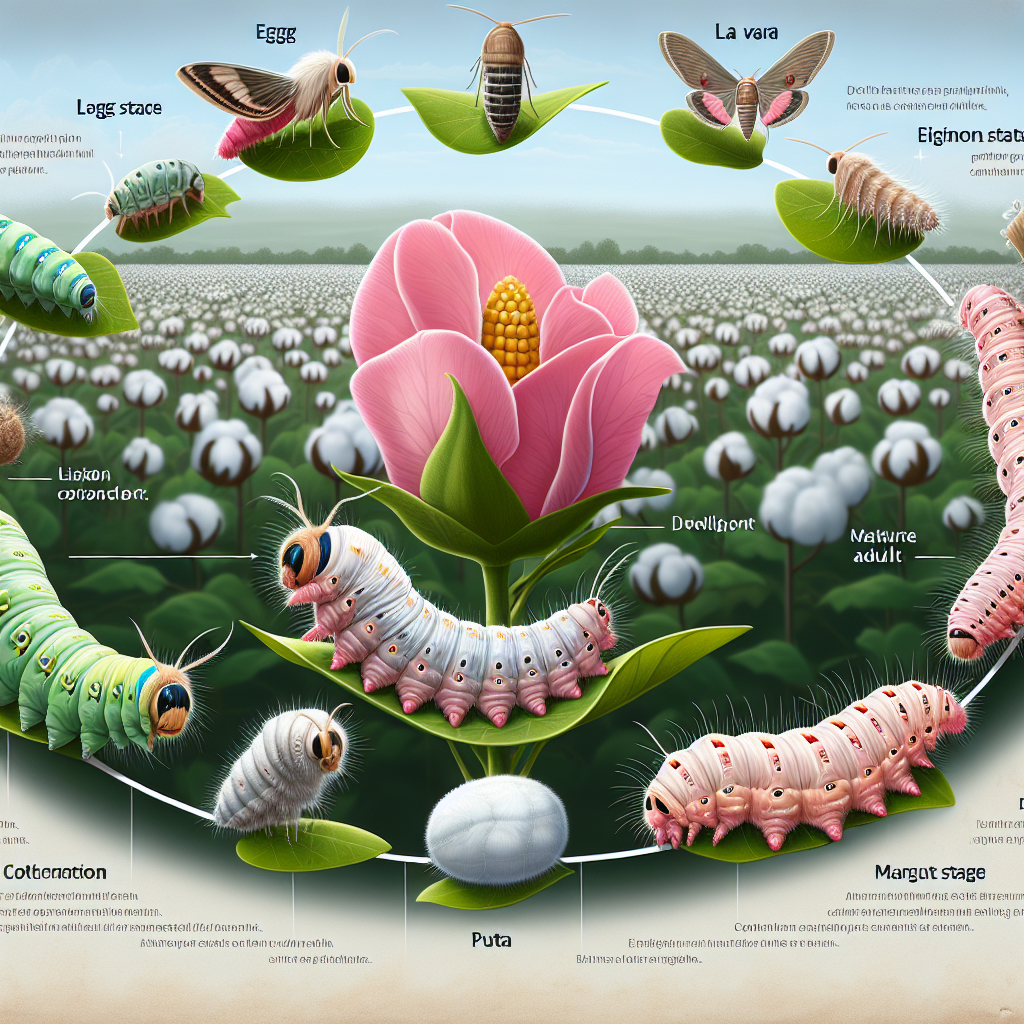Aphids Larvae: 7 Powerful Ways to Fight Aphids in 2025
“Aphids can reproduce up to 80 offspring per week, making rapid detection and control crucial for 2025 crop health.”
Summary: Aphids Larvae and Strategies to Combat Aphids in Modern Agriculture
Aphids larvae represent a critical challenge in agriculture, largely due to their rapid, prolific reproduction and the severe damage they inflict on crops globally. In 2025, the combined pressures of increasing food demand, climate change, and the need for sustainable farming have made understanding aphid biology—particularly their larvae—and deploying advanced methods to fight aphids even more vital.
This comprehensive guide covers the latest and most effective strategies—from biological control and crop genetics to precision monitoring and emerging technologies—empowering farmers, agronomists, and agri-businesses to safeguard their crops. As an expert in satellite agriculture solutions, we at Farmonaut are at the forefront, enabling precision management and decision-making against destructive aphid populations, ensuring higher yield and crop health.
Table of Contents
Understanding Aphids and Their Larvae: Biology, Life Cycle, and Threats
Aphids—referred to as plant lice—are among the most pervasive and destructive pests affecting agriculture worldwide in 2025. Their soft bodies, pear-like shapes, and wide color range from green to black, yellow, or even pink, allow them to blend seamlessly with their host plants. It is the larvae, or nymphs, that play a pivotal role in rapid population explosions that devastate fields from wheat to soybeans, potatoes, and orchards.
Aphid Reproduction: Why the Larval Stage is So Dangerous
- Aphids can reproduce without mating (parthenogenesis), allowing adult females to give birth to live young, often called larvae or nymphs, without fertilization. This cycle is further accelerated under favorable temperatures (18–28°C) and nutrient-rich crops.
- Largely wingless initially, aphid larvae closely resemble adults, feeding immediately and undergoing 3–5 molts within a short period—often just 7–10 days—before becoming mature, sometimes winged, adults. This rapid life cycle enables population surges within weeks.
- Feeding involves the piercing of plant phloem with needle-like mouthparts and extraction of sap, which is rich in sugars and nutrients but critical to plant growth and yield.
- Both direct (nutrient removal, stunting, leaf curl) and indirect (transmitting plant viruses, honeydew promoting mold) damaging effects arise from the feeding behavior of larvae and adults alike.
The indirect effect of aphids as vectors of plant viruses such as Barley Yellow Dwarf Virus in wheat or Soybean Mosaic Virus in soybeans can, in severe infestations, devastate entire crops within one season. Understanding aphids larvae is thus fundamental to developing more effective, modern strategies to fight aphids in 2025.
Aphids’ Impact on Crops and Agricultural Productivity
Aphids not only injure crops directly by causing nutrient removal but also indirectly harm plant health by:
- Transmitting plant viruses
- Reducing photosynthesis via honeydew excretion and sooty mold
- Stunting plant growth, curling leaves, and reducing yield potential
In 2025, this translates to billions in crop losses and a continual need for innovation and integrated pest management (IPM) practices to combat aphid infestations across staple crops like wheat, soybeans, and potatoes.
Why Focus on Aphids Larvae?
Aphids larvae, though small and often overlooked, represent the fastest-growing segment of aphid populations. The larval stage is responsible for a sudden boom in aphid numbers (“aphid explosions”) that outpace natural and chemical control responses unless detected early and managed. Combating aphids larvae at the right time is the linchpin for protecting agricultural productivity in 2025.
Integrated Aphid Management in 2025: 7 Powerful Ways to Fight Aphids Larvae
The challenge of aphids larvae, fight aphids and safeguard against crop loss has steered agricultural science toward modern, integrated, and sustainable strategies that move decisively beyond blanket chemical solutions. IPM in 2025 is marked by the use of advanced biological, cultural, genetic, technological, and precision agriculture tools. Below we break down the seven most effective aphid control methods aligned for high-yield, sustainable farming in the future.
“Over 60% of new crop varieties in 2025 will feature aphid-resistant genes, boosting sustainable pest management.”
1. Biological Control Agents: Harnessing Nature’s Predators
The most effective, environmentally sound approach involves leveraging natural enemies of aphids.
- Predatory insects such as lady beetles (Coccinellidae), lacewing larvae (Chrysopidae), and hoverfly larvae (Syrphidae) are voracious consumers of aphids larvae and adults, reducing populations rapidly.
- Parasitic wasps (Aphidius spp.) lay their eggs within aphid nymphs, leading to the eventual death of the host and a dramatic reduction in pest numbers.
- Fungal pathogens such as Beauveria bassiana infect aphids, offering another biological control agent with minimal environmental impact.
- Encourage these benevolent insects by planting cover crops, flowering strips, or maintaining semi-natural habitats adjacent to crop fields.
2. Cultural Practices: Reducing Aphid Favorability & Crop Exposure
- Crop rotation: Breaking the life cycle by planting non-host crops in rotation. For example, alternating wheat with legumes where possible.
- Intercropping: Diverse plant communities reduce aphid population buildup by making it harder for pests to find preferred hosts.
- Timely planting schedules: Planting crops early or late to avoid peak aphid emergence rates and associated virus-transmitting infestations.
- Plant health management: Ensuring proper fertilization, irrigation, and nutrient balance helps crops withstand and recover from aphids larvae feeding.
- Field sanitation: Remove plant debris and alternate hosts where aphids may overwinter or survive between crop cycles.
These natural and cost-effective practices lower aphid pressure and are a cornerstone of resilient farming systems.
3. Resistant Crop Varieties: Genetic Solutions for Sustainable Pest Management
Technological advances in biotechnology and plant breeding are set to revolutionize aphid management in 2025:
- More than 60% of new crop varieties—including wheat and soybeans—are being engineered or bred to feature aphid-resistant genes, slowing larvae population growth and limiting virus transmission.
- These resistant varieties produce negative biochemical cues (antixenosis) or physical barriers (like leaf hairiness) that deter feeding and oviposition.
- Resistance genes can also hinder the nutrient extraction process and sap utilization by aphids larvae.
- By deploying resistant seeds, farmers reduce pesticide needs and ensure more sustainable, resilient farming practices.
Explore Farmonaut’s crop and plantation monitoring tools to gain real-time satellite insights for resistant variety deployment and early aphid detection across large farms.
4. Precision Monitoring and Early Detection: Modern Surveillance for Aphid Larvae
Early and targeted action relies on continuous, precise monitoring—the cornerstone of fighting rapid aphid outbreaks in 2025.
- New satellite and drone-based technologies detect changes in crop color signatures, alerting to aphid stress via indices such as NDVI long before visual damage appears.
- Automated pheromone traps and IoT-enabled devices record aphid numbers, sending real-time alerts to farmers’ smartphones, enabling rapid, targeted intervention.
- Mobile apps powered by AI allow even smallholder farmers to photograph plant symptoms and immediately receive recommendations for aphid and larvae control, reducing diagnosis delays.
- We at Farmonaut provide real-time monitoring and AI-driven alerts via satellite imagery and advisory systems, tailored to large-scale farm management and individual field health, ensuring aphid issues are caught before thresholds are crossed.
Early detection is the most effective cost and labor-saving strategy—preventing local hotspots from becoming fieldwide disasters.
5. Judicious Use of Pesticides: Smarter Chemistry for Aphid Larvae Control
While broad-spectrum chemical insecticides were once the go-to remedy, modern IPM restricts their use in favor of the following:
- Application is reserved for severe outbreaks or when larval populations exceed established thresholds, thus minimizing resistance and non-target harm.
- Selective insecticides and biopesticides such as Neem oil, insecticidal soaps, and horticultural oils provide effective action without indiscriminately killing beneficial agents.
- Active ingredient rotation is vital to delay pesticide resistance in aphids populations.
- Integrated advisories—like those in our Jeevn AI advisory system—optimize field resource logistics so that chemical use is efficient, targeted, and minimally wasteful.
This approach protects beneficial insects and environmental health, in line with 2025 sustainable agriculture standards.
6. Emerging Innovations: Gene-Editing and Microbial Agents
- Gene-editing platforms (like CRISPR/Cas9) are advancing in the development of aphid-resistant crop varieties or those that target aphid larvae viability, interfering with critical development genes.
- Novel entomopathogenic microbes, especially fungi, are under extensive research and field trials, showing high aphid larvae population reductions without ecological risk.
- RNAi-based sprays are being explored to silence essential aphid genes at larval stages, stopping infestations before they mature.
- Coupled with precision agriculture tools and robust monitoring systems like those provided by Farmonaut, gene-edited and biologically protected fields represent the next era of aphid management.
Learn more about how satellite-backed monitoring systems support sustainable farming and carbon footprint tracking for eco-friendly innovation implementation.
7. Integrated Pest Management (IPM): Bringing It All Together
- All successful battle-plans against aphids larvae in 2025 rely on a complete, integrated system—combining habitat management, precision monitoring, variety selection, and responsible intervention.
- Blockchain-based traceability, as we offer at Farmonaut, supports full supply chain transparency, critical for certified organic and sustainable agricultural practices—see our traceability platform for details.
- Insurance and financial services—supported by remote satellite monitoring—use these integrated data streams for more secure lending and compensation in the face of aphid-induced losses. Learn about Crop Loan and Insurance Verification with Farmonaut.
A holistic approach maximizes effectiveness, reduces risk, and supports long-term agricultural productivity and planet health.
Comparison Table of Aphids Larvae Control Methods in 2025
Farmonaut: Tech-Driven Pest Monitoring & Crop Health Solutions
In 2025, tech-driven innovation is transforming the battle against aphids larvae and other destructive insects.
We at Farmonaut deliver:
- Satellite-Based Monitoring: Real-time, multispectral crop health data highlights aphid larvae outbreaks before visible plant damage occurs.
- AI Predictive Alerts: Our Jeevn AI system recommends timing for interventions, irrigation, and crop scouting—maximizing impact on larvae and avoiding overuse of pesticides.
- Blockchain Traceability: From field to consumer, track every stage of the crop’s journey. Perfect for organic and export-oriented growers needing full evidence of sustainable practices (learn about traceability).
- API & Developer Tools: Integrate our satellite data API and developer documentation into farm management apps for aphid detection and control at scale.
Affordability, accessibility, and actionable insights: Our modular subscriptions make satellite technology practical for smallholders, agribusinesses, and government agencies alike.
Frequently Asked Questions (FAQ) – Aphids Larvae & Modern Fight Aphids Strategies
What are aphids larvae, and why are they a threat to crops?
Aphids larvae, often referred to as nymphs, are the immature, wingless stages of aphids that quickly grow and mature on plant hosts. Because they can reproduce without mating and have short development cycles, aphids larvae enable rapid population growth, causing both direct feeding damage and indirect virus transmission—major contributors to yield loss in 2025 agriculture.
How quickly can aphid populations explode in crop fields?
Under optimal conditions, one female aphid can produce up to 80 live offspring per week. This allows populations to skyrocket rapidly, especially during warm spells and if unchecked by control measures. Continuous monitoring, such as with Farmonaut satellite systems, is essential.
Which crops are at greatest risk from aphids and their larvae?
Wheat, soybeans, potatoes, alfalfa, fruit trees, and many vegetables are highly susceptible. Because aphids are also vectors for plant viruses, their presence can devastate both yield and marketability, making proactivity in fight aphids efforts vital.
Do biological control agents really work against aphids larvae?
Yes. Natural predators such as lady beetles, lacewing larvae, and parasitic wasps are proven to significantly lower aphid populations, especially when supported by habitat management and reduced reliance on chemical insecticides.
How do tech-driven solutions improve aphid larvae detection and response?
Technologies like satellite imagery, drones, and AI-driven mobile apps enhance early detection, precision monitoring, and targeted decision-making. They allow for rapid, specific interventions to prevent the spread of aphids before visible damage occurs.
What role do resistant crop varieties play in aphid control for 2025?
More than 60% of new varieties in 2025 are biologically engineered for aphid resistance. These varieties reduce pest numbers naturally and support sustainable, low-chemical inputs in agriculture.
Can I integrate Farmonaut monitoring into my own app or farm management system?
Absolutely. Our open API (Farmonaut Satellite API) and developer documentation (see docs here) allow seamless integration of remote sensing and monitoring tools for customized, field-level aphid and pest management solutions.
Conclusion: 2025’s Integrated, Innovative Pathway to Aphid Larvae Control
Aphids larvae are at the center of one of agriculture’s toughest continuing battles—rapidly expanding populations, subtle yet severe crop damage, and persistent virus transmission. The arsenal for fighting aphids in 2025 is richer, smarter, and more sustainable than ever before: biological agents, resistant crop varieties, advanced monitoring technologies, precision intervention, and holistic, integrated management all work together for more effective pest control and healthier crops.
Sustainability, technology, and efficiency drive the future of pest management, and understanding the biology, behavior, and vulnerabilities of aphids larvae is more critical than ever. With the support of advanced monitoring tools and data-driven advisory systems—like those we provide at Farmonaut—farmers and agronomists can stay a step ahead, reducing reliance on chemicals, optimizing resource use, and improving resilience in the face of a changing climate and evolving pest threats.
Whether monitoring a single field or managing thousands of acres, choose integrated, tech-powered solutions in your fight against aphids larvae—for higher yields, economic security, and the sustainable future of agriculture worldwide.











